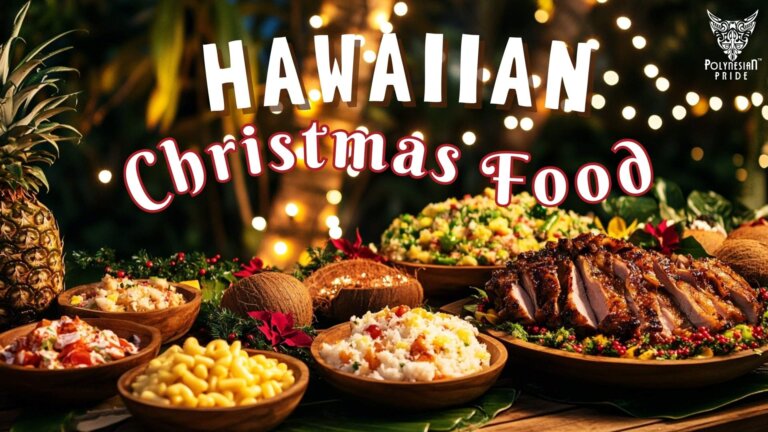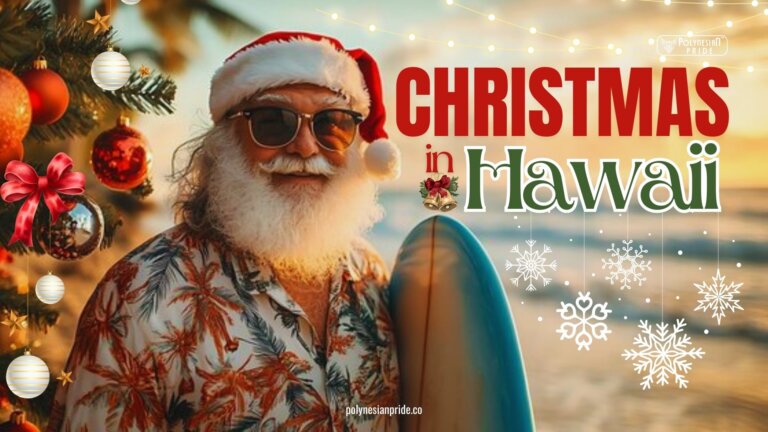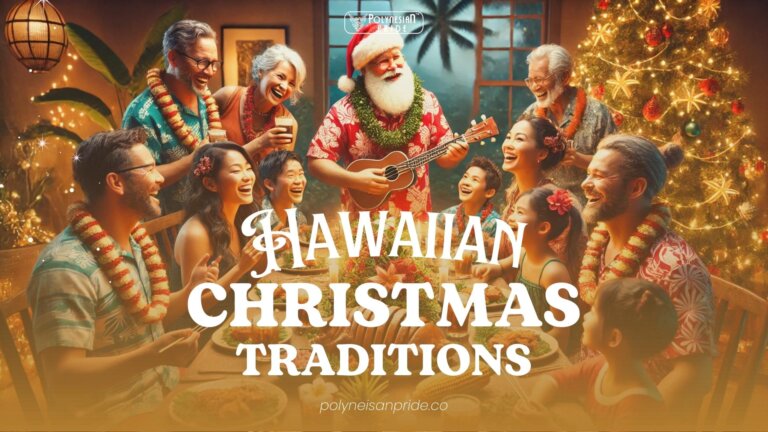American Samoa Islands: A Paradise Found In Pacific Heart

INTRODUCTION
American Samoa Islands, an unincorporated territory of the United States, is a breathtaking archipelago in the heart of the South Pacific Ocean. This enchanting group of islands offers a unique blend of natural beauty that will inspire and captivate visitors worldwide.
This article aims to provide a comprehensive overview of American Samoa, delving into its geography, history, culture, flora and fauna, tourism, economy, preservation efforts, connectivity, hospitality, and essential services.
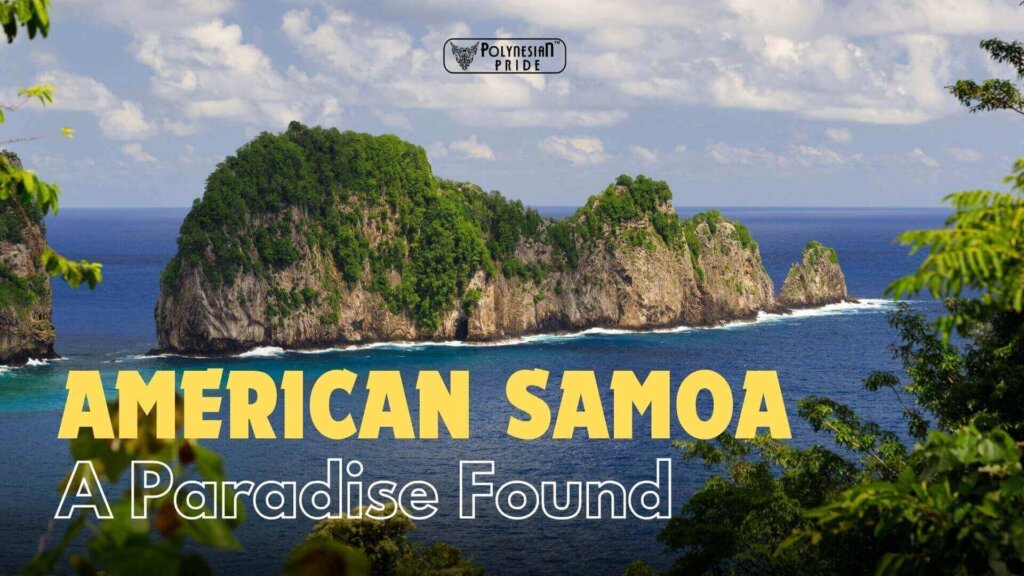
Geography and Climate
A detailed map of American Samoa highlights its unique geography and diverse landscapes, making it an essential tool for exploring this tropical paradise.
Geographical Features

American Samoa Islands are nestled in Polynesia within the south-central Pacific region, positioned approximately 1,600 miles northeast of New Zealand and 2,200 miles southwest of Hawaiʻi. American Samoa Islands’ geography, moving from west to east, includes Tutuila, Aunu’u, Ofu, Olosega, and Ta’u. Ofu, Olosega, and Ta’u together form the Manu’a Islands. Additionally, American Samoa features two coral atolls: Rose Atoll and Swains Island. Rose Atoll is about 100 miles (160 kilometers) east of Olosega, and Swains Island is roughly 200 miles (320 kilometers) northwest of Tutuila.
The biggest cities in the American Samoa Islands
Pago Pago – Capital of American Samoa Islands
The capital of the American Samoa Islands, Pago Pago, is not just a city but a central hub of the Eastern District, located on the island of Tutuila. Covering an area of approximately 3.42 square miles (8.85 square kilometers), it has a population of around 3,656 residents as of 2010. Renowned for its natural deep-water harbor, Pago Pago is a crucial port and economic center, supporting fishing, shipping, and tourism.
Tāfuna
Tāfuna, the largest village in the Tutuila of American Samoa Islands, spans approximately 2.3 square miles (6 square kilometers) and hosts around 8,000 residents (2020). It’s home to Pago Pago International Airport, Tāfuna Industrial Park, and Tāfuna High School. Popular attractions include Lions Park for recreation and various cultural sites that highlight Samoan heritage. With its strategic location and vibrant community, Tāfuna serves as a critical economic and social hub, offering diverse opportunities for business, education, and outdoor activities.
Leona
Nestled in the Western District of the American Samoa Islands, Leone is the island’s second-largest city on the west coast and boasts a rich history as the ancient capital of Tutuila Island. With a population of 1,919 residents, it is renowned for collecting some of the region’s oldest buildings, including the iconic Congregational Christian Church, the first large church erected in American Samoa.

Climate and Weather Patterns
The American Samoa Islands’ climate is typically tropical, with ample yearly precipitation. Pago Pago, for instance, receives approximately 200 inches (5,000 mm) of rainfall annually. Most of the island’s streams, particularly those in the highlands, carry larger volumes of water than those near the coast. However, these streams typically do not reach the ocean but filter into the porous basalt rocks.
Consequently, coastal wells play a significant role in providing the island’s water supply. Temperature variations are minimal, with average temperatures ranging from the high 60s F to the low 90s F (about 21C to 32C). Humidity levels remain consistently high, averaging around 80 percent. While moderate southeast trade winds are prevalent, the wet season from November to March can bring about severe storms.
Flora and Fauna of American Samoa Islands
American Samoa Islands are a true paradise for nature enthusiasts, boasting a rich and diverse flora and fauna unique to the region.
Plants: The archipelago of American Samoa hosts approximately 30% endemic plant species, encompassing 500 flowering plants, 220 ferns, vines, lichens, epiphytes, and mosses. Notably, the orchid family reigns as Samoa’s most prominent flowering plant family, boasting 101 native species.
Birds: American Samoa is home to 35 native bird species, including the revered Manumea, the national bird. Recognized for its distinctive features, the Manumea is a ground pigeon characterized by its large head and hooked beak.
Mammals: Within the native mammal population, American Samoa is inhabited by three species of bats, including giant fruit bats with impressive wingspans of up to 3 feet. Additionally, the island is home to rodents and feral pigs.
Marine life: American Samoa’s aquatic ecosystem is a treasure trove of remarkable diversity, boasting over 900 species of fish, 230 species of coral, and rare and endangered sea turtles. Furthermore, humpback whales and dolphins frequent the waters surrounding the archipelago, further enriching its marine biodiversity.

History of the American Samoa Islands
What is American Samoa known for? American Samoa’s history and culture are deeply intertwined, weaving a tapestry of traditions, beliefs, and practices that have endured for centuries.
The First Inhabitants

The Samoan islands were initially inhabited by Polynesian voyagers around 1,000 B.C., believed to have originated from Tonga. These early settlers played a crucial role in the peopling of the Pacific, as voyagers from Samoa later departed to colonize much of eastern Polynesia around 500 C.E. This migration is considered significant in understanding the spread of Polynesian culture and influence across the Pacific region.
First European Contact
The Samoan islands encountered their first European contact in 1722 when Dutch explorer Jacob Roggeveen sighted them. This initial encounter led to sporadic interactions with traders, beachcombers, and other European navigators over the following years. By the 1830s, the islands saw the arrival of the first missionaries sent by the London Missionary Society, mainly to Tutuila. Traditionally, Tutuila was a refuge for chiefs exiled from the main Samoan islands of Savai’i and ‘Upolu to the west. Additionally, the Manu’a islands maintained political independence and were governed by their high chief.
American Samoa Islands in World War II

In the late 1800s, Pago Pago became a pivotal hub due to its exceptional natural deep-water harbor, attracting the interest of nations like the United States, Germany, and Great Britain, all vying for control over the Samoan Islands. After negotiations, Great Britain relinquished its claim. In 1878, the United States finalized a treaty, securing the establishment of a naval station at Pago Pago harbor.
Subsequently, in 1899, the United States and Germany unilaterally agreed to divide the islands into Eastern (now American) Samoa and Western Samoa (now Samoa) without consulting local chiefs. By 1904, the local chiefs formally ceded all eastern islands to the United States. However, formal acceptance by Congress didn’t occur until 1929. From 1900 to 1951, the U.S. Navy administered American Samoa, after which control shifted to the Department of the Interior, appointing a territorial governor with full administrative powers.
The first gubernatorial election took place in 1977, marking the beginning of elected governance in the territory. Additionally, in 1981, American Samoa gained representation in the U.S. Congress with its first non-voting delegate.
Samoa Vs American Samoa
Similarities
Samoa and American Samoa share a rich Polynesian cultural heritage, evident in their traditions, language, and customs. Geographically, they are part of the same archipelago in the South Pacific Ocean, featuring lush tropical landscapes, pristine beaches, and vibrant marine life. Both nations have strong family and community values, close-knit social structures, a deep respect for elders, and traditional leadership.
Differences
Political Status: Samoa is independent, while American Samoa is a U.S. territory.
Legal Status: Samoans are citizens of an independent nation. American Samoans are U.S. nationals, not full citizens, and they are allowed to live and work in the U.S. without a visa, but not vote in federal elections.
Government Structure: Samoa has a parliamentary democracy with a constitutional monarchy. American Samoa has a locally elected governor and legislature and a non-voting delegate in the U.S. House of Representatives.
Economic Development: Samoa’s diversified economy includes tourism, agriculture, and manufacturing. American Samoa relies on federal aid, tuna canning, and the U.S. military presence.
Despite these differences, American Samoa and Samoa maintain strong cultural ties and a shared Polynesian heritage, cooperating on regional issues like environmental conservation and artistic preservation.

American Samoa Islands Demographics
Languages
American Samoa has two official languages: English and Samoan. Samoan is commonly spoken in informal settings, such as at home and during cultural events. It is crucial for preserving traditions and community bonds.
English is predominantly used in formal settings, including government, schools, businesses, and legal proceedings. It is the primary language of instruction and is widely understood. Most American Samoans are bilingual, though fluency varies based on age, education, and exposure to English-speaking environments.
Ethnice
American Samoa is a culturally diverse territory, comprising primarily indigenous Samoans alongside significant communities of other ethnicities. Samoans, deeply rooted in Polynesian traditions, form the majority. At the same time, Tongans, Filipinos, and other Pacific Islanders contribute to the ethnic mosaic. Moreover, American Samoa boasts a diverse Asian population, including Chinese, Japanese, Korean, and other ethnicities. European settlers and expatriates add further diversity to the territory. This rich ethnic tapestry reflects American Samoa’s migration and cultural exchange history, enhancing its vibrant cultural landscape.
Religion
In American Samoa, most of the population is Christian, with the Congregational Christian Church (CCCAS) being the most significant denomination at 50-60%. Catholicism is the second-largest, representing 20-30% of residents. Other Christian groups, including Methodists, Latter-day Saints (Mormons), and Seventh-day Adventists, comprise 5-10% of the population. While Christianity is dominant, smaller religious communities and individuals practicing other faiths are also present.

American Samoa Islands Culture
American Samoa’s culture is a vibrant blend of traditional Polynesian heritage and modern influences. At the heart of this culture is the “fa’a Samoa,” or the Samoan way, which emphasizes communal living, respect for elders, and strong family ties. This cultural framework is evident in daily life, social structures, and community events.
Traditional Practices and Art Forms
Traditional Samoan practices, such as tattooing (tatau), dance (siva), and music, significantly preserve the islands’ heritage. The intricate patterns of Samoan tattoos are a form of body art and a symbol of social status and cultural identity. Siva, the traditional dance, is performed at various ceremonies and celebrations, showcasing the grace and storytelling prowess of the Samoan people. Music, often accompanied by traditional instruments like the pate (wooden drum) and the conch shell, is integral to festivities and daily life.
Festivals and Celebrations
American Samoa’s cultural calendar is filled with festivals and celebrations highlighting the islands’ rich traditions. Events such as Flag Day, celebrated on April 17th, commemorate the islands’ history and showcase traditional dances, music, and crafts. Family-oriented celebrations, including weddings and funerals, reflect the importance of family and community ties.
Cuisine
American Samoan cuisine is another vital aspect of the culture. It is characterized by its use of local ingredients like taro, breadfruit, coconut, and seafood. Traditional dishes such as palusami (taro leaves cooked in coconut milk) and oka (raw fish marinated in citrus juice and coconut milk) are staples at communal feasts and gatherings.
Modern Influences
While deeply rooted in tradition, American Samoa is still subject to modern influences. Education, technology, and global connectivity have introduced new elements to the islands, creating a dynamic cultural landscape that balances the old with the latest.
The younger generation is increasingly exposed to global cultures while remaining deeply connected to their Samoan heritage.
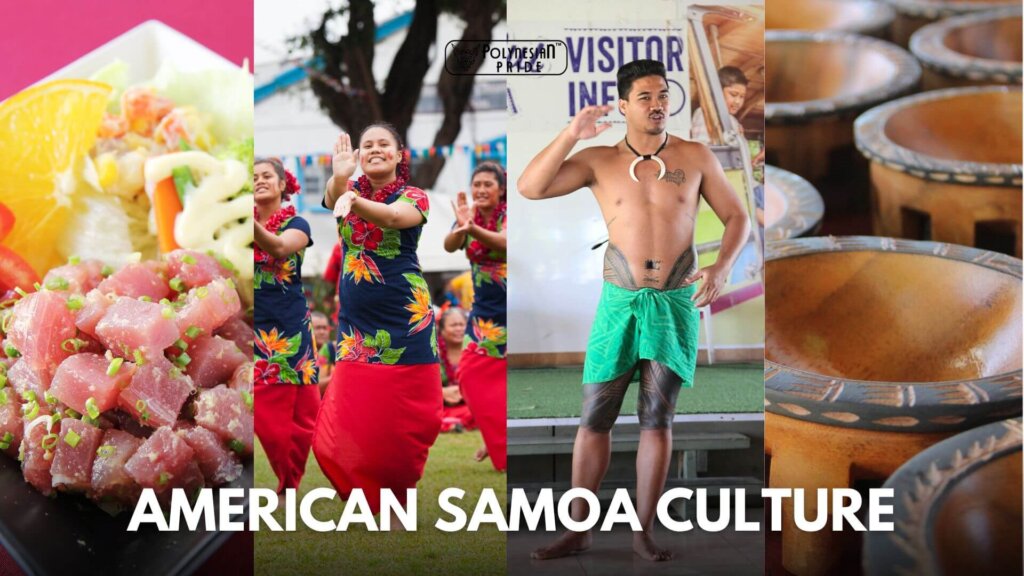
American Samoa Islands Economy
The U.S. Influence
Services and manufacturing heavily drive the economy of the American Samoa islands. The close ties to the United States significantly influence the Samoan economy, impacting the territory’s economic structure and development.
Economic Activities
Government Employment: Government jobs are a significant source of employment in American Samoa, encompassing various sectors such as education, healthcare, and public services.
Canned Tuna Industry: Canned tuna is American Samoa’s primary export. The territory hosts several fishing, processing, and cannery operations, with two major canneries accounting for a significant portion of non-government employment, approximately 80%.
Tourism: Tourism is a developing sector in American Samoa, but remains limited compared to other industries.
Traditional Economy: The rest of the economy is organized in a conventional Polynesian fashion. More than 90% of the land is communally owned, and family gardens produce staples like coconuts, breadfruit, and yams.
Agriculture: Besides family gardens, taro, bananas, tropical fruits, and some vegetables are produced semi-commercially.

Governance and Political
Political Structure
The American Samoa Islands is an unincorporated territory of the United States, featuring a locally elected governor and a bicameral legislature, including the Senate and House of Representatives. This unique political status has led to ongoing debates about the future of American Samoa, with some advocating for greater autonomy or even complete independence.
Despite these discussions, American Samoa maintains a close relationship with the United States, benefiting from federal funding and assistance in critical areas such as education, healthcare, and infrastructure. The territory also retains significant self-governance, particularly in controlling its immigration and customs policies.
Local Governance
Fono: The American Samoa Fono, comprising a Senate and House of Representatives, is tasked with enacting laws and overseeing government operations.
Traditional Leadership: Chiefs, known as matai, hold significant sway in local governance by representing their villages and communities in decision-making processes.
Community Engagement: Public participation and community input are pivotal in governance, ensuring decisions align with the populace’s needs and values.
Legal System
American Samoa’s legal system is heavily influenced by U.S. law, with adaptations to incorporate traditional customs and practices. Land ownership and tenure systems are governed by communal customs and traditions, with land held collectively by families and clans. Customary law, including fa’a Samoa practices, coexists with statutory law, providing a framework for resolving disputes and maintaining social order. This blend of U.S. legal influence and indigenous customs ensures a unique legal structure that respects modern and traditional governance.

Education and Healthcare
Education and healthcare are essential components of American Samoa’s social infrastructure, playing a crucial role in the well-being and development of its people.

Education System
Public Schools: The American Samoa Department of Education oversees public schools across the islands, providing preschool to high school education.
Challenges: The education system needs more resources, there are teacher shortages, and curriculum development must reflect local culture and values.
Higher Education: The American Samoa Community College offers post-secondary education and vocational training programs to prepare students for the workforce.
Healthcare Services
LBJ Tropical Medical Center: This is the main hospital in American Samoa, which provides a range of medical services to the local population.
Health Challenges: The islands face health challenges such as non-communicable diseases, limited access to specialized care, and the impact of environmental factors on public health.
Community Health: Public health initiatives focus on community engagement, disease prevention, and promoting healthy lifestyles to improve well-being.
Social Services
Social Welfare Programs: The American Samoa Department of Human and Social Services administers programs to support vulnerable populations, including the elderly, disabled, and low-income families.
Youth Services: Youth development programs aim to provide opportunities for personal growth, skill-building, and leadership development among young people.
Cultural Preservation: Efforts to preserve and promote the Samoan language, traditions, and cultural practices are integrated into social services to maintain cultural identity and heritage.
Tourism and Attractions
National Park of American Samoa
The National Park of American Samoa spans three pristine islands – Tutuila, Ofu, and Ta’u – offering visitors an unparalleled opportunity to immerse themselves in the islands’ natural beauty and cultural heritage.
Explore diverse landscapes, from lush rainforests to rugged coastlines and vibrant coral reefs, through a network of hiking trails winding through ancient villages, dense forests, and breathtaking coastal vistas.
Encounter native wildlife and rare fish species as you traverse the park’s terrain, whether seeking a challenging trek to remote waterfalls or a stroll along secluded beaches. Unforgettable experiences await all who venture within the park’s boundaries.
Pago Pago Bay
Nestled on the picturesque Tutuila Island, Pago Pago Bay captivates visitors with its crystal-clear waters and stunning coastal scenery. Renowned for its vibrant marine life and pristine coral reefs, this bay is a haven for swimming, snorkeling, and boating enthusiasts.
Dive beneath the surface to discover a kaleidoscope of colorful fish and fascinating sea creatures, or embark on a boat excursion to explore hidden coves and remote islands dotting the bay. Relax on sandy shores and soak up the warm Pacific sun, surrounded by the natural beauty of Pago Pago Bay.

Fatu-ma-futi Village
Fatu-ma-futi, nestled in central Tutuila Island, American Samoa, offers visitors a glimpse of authentic Samoan life. This quaint village, located at the eastern entrance to Pago Pago Harbor just south of Pago Pago, boasts a rich cultural heritage and stunning natural landscapes. Along the highway, you’ll find Flowerpot Rock, also known as Fatu Rock, a unique geological formation adding to the area’s charm.
Experience the enchanting allure of Fatu-ma-futi through its captivating history, scenic beauty, and intriguing legends, promising a memorable and enriching experience for visitors seeking an authentic Samoan adventure.
Ofu Beach
Ofu Beach, located on Ofu Island in American Samoa, is a serene paradise known for its pristine beauty. The best time to visit is during the dry season from May to October, offering sunny weather for swimming and snorkeling. With its powdery white sands, clear turquoise waters, and vibrant coral reefs, Ofu Beach provides an unforgettable tropical escape for those seeking relaxation and adventure.
Matafao Peak
Matafao Peak in American Samoa is a captivating destination boasting stunning natural beauty and cultural significance. Nestled within the National Park of American Samoa, this majestic summit offers panoramic views of lush landscapes and the Pacific Ocean. Travelers can embark on exhilarating hikes along trails like Mount Alava and Pa’ia, immersing themselves in the island’s rich biodiversity and Indigenous traditions.
From wildlife watching to sampling traditional Samoan cuisine, there’s no shortage of experiences. Visitors should prioritize environmental conservation and safety precautions while exploring Matafao Peak, ensuring a memorable and responsible adventure in this enchanting corner of the world.

American Samoa Things To Do
Cultural Experiences
Village Visits: Visitors can experience the traditional Samoan way of life by visiting local villages and participating in cultural activities.
Handicraft Markets: Local markets offer a wide range of traditional handicrafts, such as wood carvings, woven baskets, and tapa cloth.
Cultural Performances: Attend cultural events and festivals to witness traditional dances, music, and storytelling.
Local Festivals and Events
Flag Day: Flag Day in American Samoa is celebrated on April 17th to commemorate the historic event of raising the American flag in the territory in 1900.
White Sunday: A significant cultural event held annually in October, where children are celebrated and families gather for feasts and festivities.

CONCLUSION
In conclusion, the American Samoa Islands are a vibrant and culturally rich destination that offers a unique blend of traditional Samoan practices, stunning natural beauty, and warm hospitality. From its ancient Polynesian roots to its modern governance structure, the islands embody a harmonious fusion of tradition and progress. By preserving its cultural heritage, protecting its natural resources, and investing in the well-being of its people, American Samoa can continue to thrive and offer a truly authentic Pacific experience to visitors and residents alike.
Whether exploring lush rainforests, immersing in village life, or enjoying a traditional dance performance, American Samoa invites you to discover the magic of the South Pacific and experience the spirit of aloha in every corner of this enchanting archipelago.
FAQs
What is the relationship between American Samoa and the United States?
American Samoa is an unincorporated territory of the United States, which means it is under U.S. sovereignty but not fully part of it.
What languages are spoken in American Samoa?
The official languages are English and Samoan, with Samoan being widely spoken among the locals.
What are some popular dishes in American Samoa?
Some popular dishes include palusami (a dish made of taro leaves, coconut milk, and onions), sapasui (Samoan chop suey), and oka (raw fish marinated in lemon juice and coconut milk).
What are the best times to visit the American Samoa Islands?
The best time to visit the American Samoa Islands is during the dry season, which runs from May to October. This period offers sunny weather and ideal conditions for outdoor activities.

I am Leilani Miller – I research focusing on Vanuatu – volcanic landscapes, blue holes, coral reefs & rainforests. I have over five years of experience researching and sharing insights on tourism and environmental activism. Explore and experience without limits through my latest article.
Contact information:
Email: [email protected]
Tel: +1 (808) 555-1528

